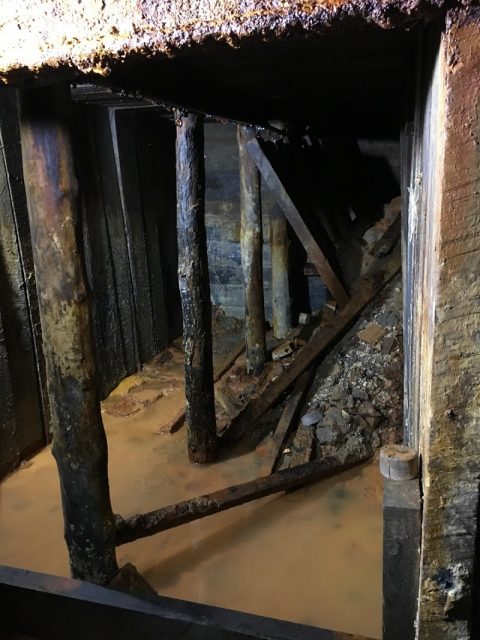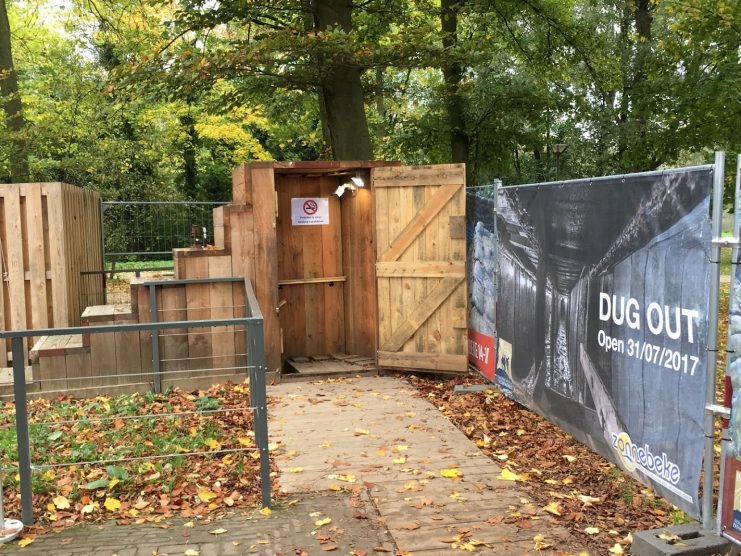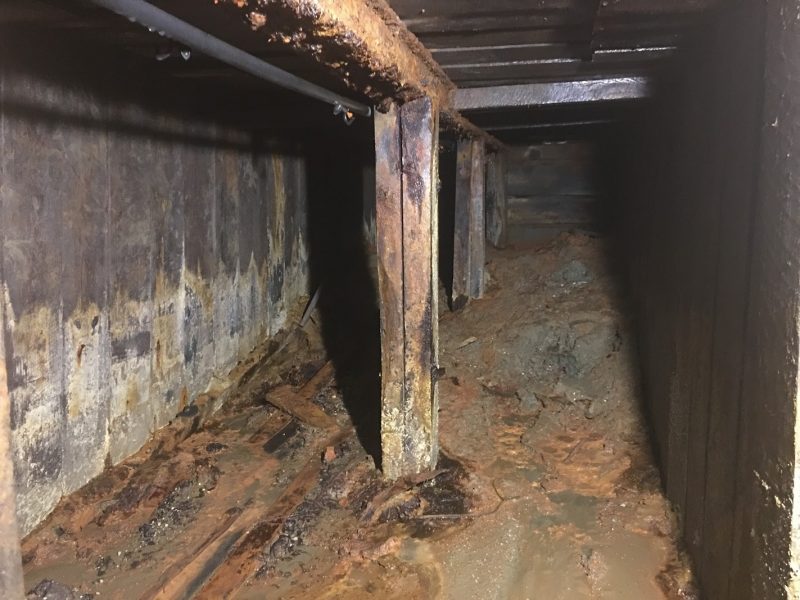In the Ypres salient, the British army had to operate in a landscape that was completely shot to pieces. This was especially true in the area around Passchendaele. No trees were left standing, and of the buildings, little more than the foundations remained so there were no places left for cover.
That left only one way to go, down, and thus the British dug hundreds of dugouts in the salient. In these dugouts, the British soldiers were safe from bullets and artillery and used for a variety of tasks. From underground command posts, shelters for the men or as medical facilities which could hold from 50 to 2000 men.
Between November 1917 and April 1918, Australian and Canadian sappers dug a deep dugout under the ruins of the Zonnebeke church. They were expecting to find a 12th-century crypt of an Augustinian abbey that once stood on this site. This Crypt could serve as a ready-made part of the shelter, but it turned out not to exist. They decided to build a dugout there anyway; the church foundations provided extra strength and thus security.
The structure they build is about 5 meters underground, has a main gallery of nearly 29 meters long, five rooms, side corridors and two access stairs.
When the Germans launched their spring offensive in March 1918, the British were forced to shorten their lines and, between April 11th and April 27th, they abandoned Passchendaele ridge. Virtually all the terrain captured in the third Ypres battles was given up without a fight. The construction of the dugout, now outside allied lines, was abandoned and it slowly filled with water and was forgotten. After the war, the rebuilding of Zonnebeke began, and they build a new church to the north of the ruins of the old one.

In 1989, in an effort to locate the abbey crypt, just like in World War I, the dugout was rediscovered and was marked with blue lines in the pavement above.
For the 100th anniversary of the Third battle for Ypres, also known as the battle for Passchendaele, the decision was made to reopen the dugout for the public for the first and only time.
The original exit was replaced by a new one so that visitors could walk through the entire main gallery and they slowly drained the water. From 31 July till 10 November 2017, it reopened, giving the public for the first time ever access to an original British First World War dugout.
During the time that the dugout was open, they sprayed over 100-liters of water on the wood every night to keep it wet in an effort to try and prevent it from rotting. Even so, when I visited it, the tour guide said that they were pushing the limits with opening it for the three and half months as they saw the wood deteriorate every day.
The Battlefield Explorer is going in!

So there I was, on a dreary Saturday in November waiting in line to enter the dugout. To better appreciate it I waited until I was the very last person to enter; these experiences are all the more impressive when you are not in the middle of a 40 person group.
The guide told us not to touch the wood on the walls because it excreted an ink-like substance that would be very difficult to wash off. Naturally, I had to experience that for myself, and the man was right, it did stay on my fingers for a long time. This did not bother me in the least, and I was happy to pay this penance to be able to touch something so significant.
The dugout is just 29 meters long, so it doesn’t take hours to see everything. On top of that, every 20 minutes a new group enters the dugout, so you need to move through it rather quickly. Dragging my feet and taking as many pictures and footage as possible I reluctantly left the dugout and, as through a 100-year time warp, suddenly was in the 21st century again.
A once in a lifetime experience, that I wouldn’t want to have missed for the world. A couple of days after my visit, on November 9th, 2017, they sealed the entrances and flooded the dugout.
At this time, there are no plans ever to reopen it.
The Battlefield Explorer
Join me on my trips, visit the known and unknown battlefields, uncover hidden artifacts that are still out there, experience amazing war history events, and pay tribute at commemorations. This will be the adventure of a lifetime, and you will be on the front row to experience it with me.
